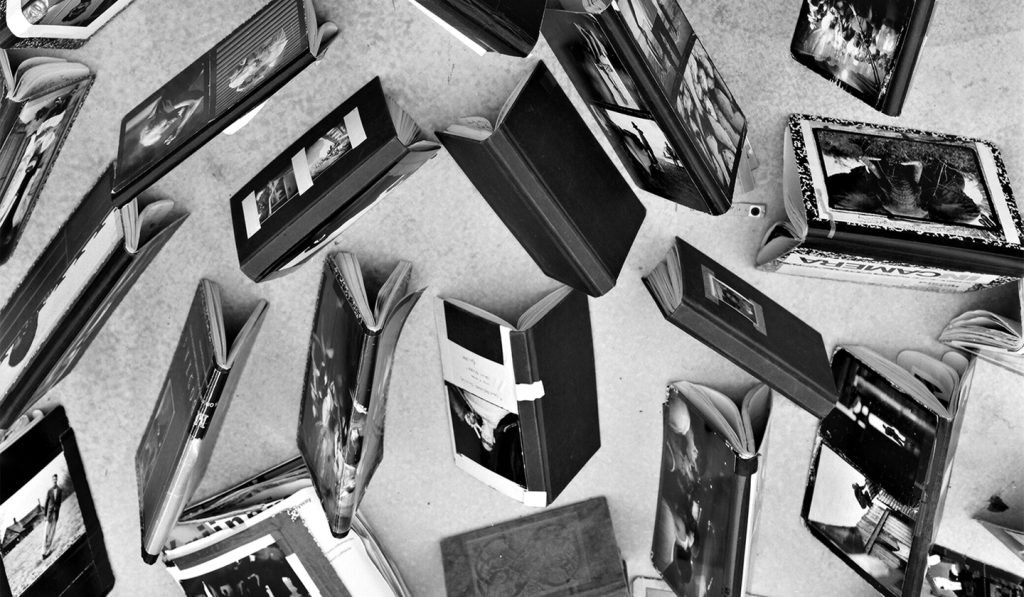Hit the Books with Dan Milnor: telling the story of your work
Editor’s note: Learn to tell the story of your work in Portfolio Building and Branding, a three-week course with Dan Milnor, now available for replay.
***
I pulled into the parking space and turned off the car. Seconds later, there was a knock at my driver’s side window. After carefully opening the driver’s door, I noticed a man standing there with a fifty-dollar bill. He looked vaguely familiar, but I couldn’t quite place where I knew him from.
“Can I help you?” I asked.
“Here,” he said, handing me the money. “I want to make sure I get my copy of your book before you sell out,” he said.
Suddenly, I remembered where I knew him from. I had been in the same location a year before, selling books and prints at an art fair. I was selling a small book of my work from Sicily, and this was the book the man was after. But the year before, I had sold through my print run, and he was left empty-handed.
“You know, you could have purchased this book anytime during the year by simply going to the online bookstore and purchasing a copy,” I said. Adding, “You didn’t have to wait an entire year.”
“Oh no, not like that,” he said. “Before I buy the book, I need to hear the story again.”
This moment had a monumental impact on my life as a bookmaker. It took me several minutes to fully understand what this man was referring to, but when I finally figured it out, it changed just about everything about how I make books.
The “story” he was referring to was, in fact, several stories. The first story was that of the images themselves. How I made them, how I edited them, and what the project’s purpose was. The second was my story, not just as a photographer—but my entire life history. This man was buying my book, but more importantly, he was also buying a small part of me.

I learned that day that fans of a certain body of work or project are also fans of much more than the work itself. They are fans of the process, the experience, the history, and a much broader story that helps add context to where an artist fits in the world.
The more someone knows about the artist, their process, and their work, the more points of relatable engagement they have. Sharing these parts of the process make readers or collectors feel like they are more closely involved, almost as if they were with the artist while they made the work.
Learning from this experience, I began to change the design of my books, including my portfolios. Before this encounter, my portfolios were bare bones, stripped-down vessels containing nothing more than single images per page and only the absolute best, most essential images that reflected my skill as an image-maker. After this encounter, my portfolios took on the look of small narratives, complete with bios, essays, dedications, and stories in addition to the images themselves. The new books didn’t just display my work. The new books took on my personality.
Whether we want to believe it or not, creatives get jobs for numerous reasons, and not all these reasons speak directly to talent or the work itself. Many folks can make decent work with the long list of modern tools at our disposal. But why someone gets hired over someone else often boils down to far more than the work itself. How someone is dressed, how they speak about their work, or their knowledge of the history of their industry can often convince a client that they are the best person for the job. Clients think they are well-rounded, interesting, knowledgeable, and can have a conversation that goes far beyond f-stops and shutter speeds.

Our books and portfolios must reflect who we are and not just what we do. This isn’t a burden. This is an opportunity to share what makes us who we are. Products of our environments and our varied histories are the quirks that make us as unique as our fingerprints.
Somewhere out there, a client is looking for a person like you. When your book’s pages are slowly turned, what is revealed can feel like finding so much more than a book of pretty pictures. Turning those pages can feel like finding a long, lost friend.
Blurb offered an online portfolio course where we will walk through the stages of portfolio design. We will cover defining parameters, choosing software, and how best to utilize your portfolio once completed. The class will also cover defining goals, editing, sequencing, collaboration, and designing with a specific client in mind. The class is open to bookmakers of all skill levels and will provide a foundation for how to highlight your best work. Replay Portfolio Building and Branding now.

